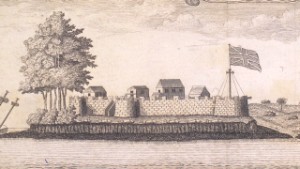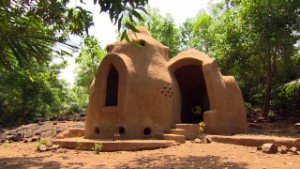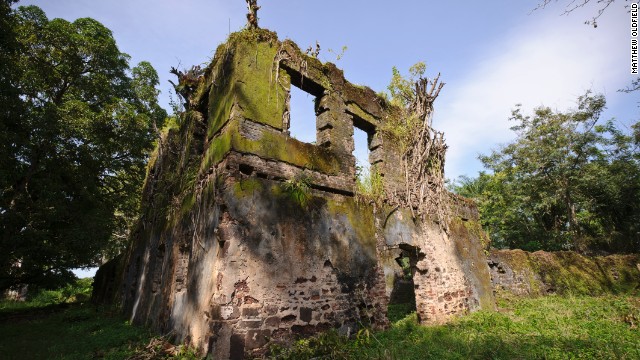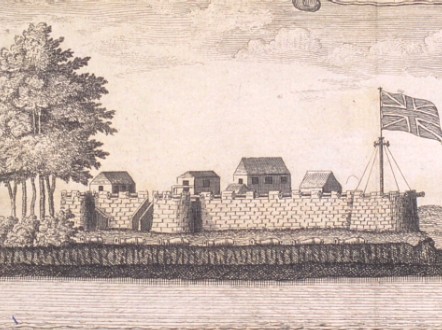'Slave trade ghost town': The dark history of Bunce Island
Located some 30
kilometers from Freetown, this tiny strip of land in the Sierra Leone
river served as a major post for the transatlantic slave trade in the
18th century.
For tens of thousands of
Africans, this was the place where their life in the continent ended --
men, women and children were kidnapped and brought to the island's fort
to be traded and eventually put on slave ships bound for the Americas.
"The African-American
story is very much here," says Joseph Opala, director of the Bunce
Island Coalition, a group of historians and archaeologists working
together to turn the island into a national landmark that can be
appreciated for its historical value.
Historical image of the British slave trading post of Bunce Island.
Upon arriving in the
American colonies, West African slaves were forced to work in rice
paddies, cotton fields and indigo plantations along the South
Carolina-Georgia seaboard where the moist climate and fertile land were
very similar to their African homelands.
"There are 40 big castles
like this along the West African coast, but this is the only one that
sent appreciable numbers of captives to what is now the U.S.," says
Opala.
 Map of Bunce Island. Click to expand.
Map of Bunce Island. Click to expand. Part 1: Rebranding Sierra Leone
Part 1: Rebranding Sierra Leone
 Part 2: Ecotourism in Sierra Leone
Part 2: Ecotourism in Sierra Leone
'The place where history sleeps'
Stepping onto the
uninhabited island, you quickly realize that this is a place forgotten
by time, its ancient structures gradually decayed by the two centuries
of tropical rain seeping down.
Unlike other slaving
trading posts, nothing was ever built on the island after its
abandonment in the mid-1800s. Its crumbling ruins, blanketed by
overgrown weeds and ivy roots, remain relatively untouched to this day,
serving as a reminder of the island's dark past.
"One Sierra Leonean
years ago used to refer to Bunce Island as the place where history
sleeps," says Opala. "And there's no better description of it -- it's a
kind of slave trade ghost town."
Opala says that to this
day, many people in Sierra Leone are not aware of Bunce Island's grim
place in history. He says that the island receives just a small number
of people each year, mainly foreign visitors or expatriates.
"For tourists, it means
renting a boat for 500, 600, $700, or there are tourist services
oriented toward tourists that will take you for $60-70," says Opala.
"But for local people, it's absolutely not affordable. But at the same
time, there's not a lot of local interest yet in going there because
people still don't know much about it."
To change that, and
remind both tourists and locals about its importance, the Bunce Island
Coalition has launched a $5 million project to conserve what's left of
the island. The group also wants to build a museum in Freetown as part
of efforts to shed light on the island's dark past.
"There's an awakening
now out here by the political elite and many ordinary citizens that this
place is not just important for history," says Opala.
"But it also can serve
as a source of revenue for the country, and can strengthen the links
between African-Americans and Sierra Leoneans which may in the end be
the most important outcome of this, because that can last forever."
 Bunce Island, in
Sierra Leone, was a British slave trading post in the 18th century. From
its shores, tens of thousands of Africans were forcefully shipped to
the American colonies.
Bunce Island, in
Sierra Leone, was a British slave trading post in the 18th century. From
its shores, tens of thousands of Africans were forcefully shipped to
the American colonies.

No comments:
Post a Comment